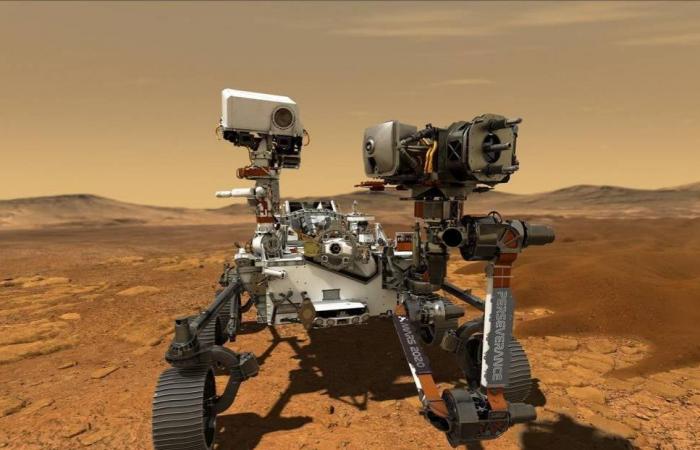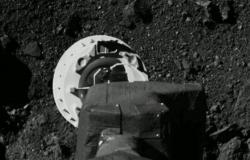Agency
Municipiosur.com
Recently, Perseverance, a NASA robotic rover that has been circling the surface of Mars since 2021, has traversed difficult terrain and encountered some surprises.
The Bright Angel Martian area, near where the robot has been exploring lately, caught the attention of mission scientists for its light-colored rock outcrops.
In order to reach Bright Angel, the rover traveled through terrain. At first, it was relatively clear and Perseverance could cover a fairly large distance each day. But the terrain became steeper and steeper, with increasingly larger and more numerous boulders blocking the rover’s path. Progress was increasingly slow and difficult.
The team tasked the robot with carrying out a route but, often, upon reaching the most distant section, and therefore most difficult to have been observed in detail from a distance, Perseverance determined that the terrain in front of it was too dangerous and without the possibility of avoid it by temporarily deviating from his course a little, and he made the decision to stop.
It was becoming increasingly difficult to reach Bright Angel.
There was an alternative, although not without risks: advancing through a field of dunes.
However, advancing directly over dunes was ruled out. In the past, other robots that have driven over dunes have suffered serious problems and one became permanently stuck in the sand.
The hope was to find a section of that field in which the dunes were small and far enough apart that Perseverance could pass between them. In addition, the rover needed a surface that would serve as an entrance ramp through which to access that ideal section of the dune field. Luckily, both things were spotted, and Perseverance entered the passage, advancing very quickly.
Thanks to this, the robot was able to access objectives of great scientific interest.
The ancient river channel aroused interest from the first moment, representing an excellent opportunity to investigate what this Martian river was like. The presence of liquid water at a time in Mars’ distant past raises the fascinating possibility that life may have emerged there. Sufficiently detailed analyzes of samples taken from key sites could reveal telltale signs of life.
But during its journey, Perseverance encountered other sites of scientific interest. A small hill, called Mount Washburn, is covered by intriguing rocks, some of a type never before observed on Mars. The diversity of textures and compositions at Mount Washburn was an exciting discovery for the team. However, one rock, which has been named Atoko Point, garnered the most attention from the scientific team.
Atoko Point, which measures about 45 centimeters wide and about 35 centimeters high, stands out for its light tone in a terrain where dark tones predominate.
An analysis carried out by two of the robot’s instruments indicates that the rock is composed of the minerals pyroxene and feldspar.
Some Perseverance scientists believe that the minerals that make up Atoko Point were produced in a mass of magma. Other members of the team think that perhaps the boulder was created far beyond the walls of Jezero Crater and was transported there by rushing water currents.
After leaving Mount Washburn, Perseverance continued north until it reached a site called “Tuff Cliff,” whose geology it studied, before making the final 4-day journey to Bright Angel. Perseverance is currently analyzing a rock outcrop to evaluate whether it is worth collecting an internal sample.
With information from: Science News






